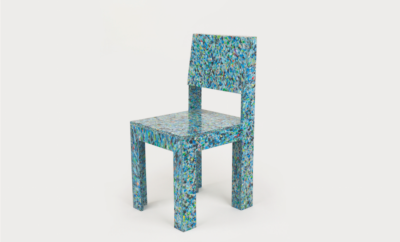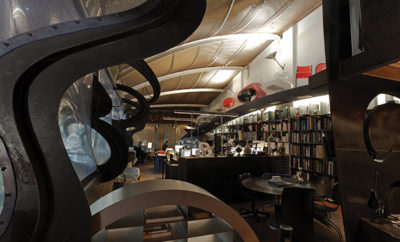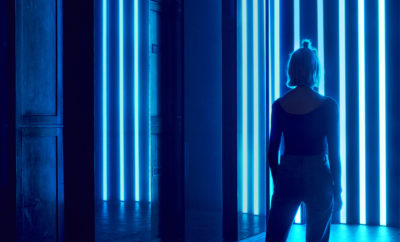 COURTESY FRENCH AND TYE
COURTESY FRENCH AND TYE
Architecture
A Mid-Century Solution in London
LONDON’S DESIGN MUSEUM REOPENED on November 24 after moving from the gritty but trendy East End to new, larger premises in the tonier West End. Deyan Sudjic, its director, has ambitious plans for the new museum, housed in the remodeled Commonwealth Institute building, a prestigious address on Kensington High Street.
When the journalist and architecture critic took over running the museum ten years ago, its cofounder, Terence Conran, had already decided to relocate from Shad Thames, its dockside home since 1989, to somewhere more accessible. “My mission was to find that place,” Sudjic says. “The initial conversation was with the Tate. We were looking at buying some land behind Tate Modern’s Turbine Hall. It was a nice idea to have five million people come by the front door—but they wouldn’t necessarily have come in and it would have cost us a great deal of money.”
Other possibilities included taking space in the Victoria and Albert Museum, which in the 1980s housed the design museum’s seminal precursor, Conran’s Boilerhouse Project. But the search ended when redevelopers of the Commonwealth Institute site made Sudjic an offer he couldn’t refuse. Dating from 1962, the building had been designed by the London County Council’s former chief architect Robert Matthew in a strikingly daring modernist style. After the institute moved out in 2000, it was closed and left empty, protected against demolition but tangled in regulatory restrictions on its future use.
“We were offered it as part of a complicated property negotiation,” Sudjic says. “When the site was acquired by a property company to build luxury apartments, the local authority made approval conditional on the developer finding a cultural user for the landmark structure. Thus, an arrangement ensued—a hundreds-of-years’ rent-free lease, with a £20 million contribution of works to the building as a gift from the landlords.”
“We sold our original building to Zaha Hadid,” he adds. “Now we have a transformed building.” Indeed, designer John Pawson has effectively created a new building inside the shell of the old one, an airy, cathedral- like space three times larger than the former Shad Thames site. “But the key is what we do with it,” Sudjic notes. “We have built a theatre, a series of stages; now the job is to get the repertoire right.”
The building has exhibition galleries for up to three simultaneous temporary shows; learning spaces; a library; and an archive. The permanent collection will be displayed on the top floor. “Our permanent collection is trying to find a new way to show design in a museum context,” Sudjic says. “Not as chronology, not as the greatest hits, but really trying to explore how things come about, what they mean, how the world is shifted by certain projects.”
Fear and Love: Reactions to a Complex World, the opening exhibition, will show work by eleven designers and architects from around the world, including Rem Koolhaas’s OMA partnership, Hussein Chalayan, Madeline Gannon, and Neri Oxman. “They have been asked to create installations that reflect on some of the things that design is doing to the world and that we might not be entirely comfortable with,” Sudjic says. “The smart phone kills off privacy, robots will take away our jobs. They reflect on things like that.”
The museum will also have a studio incubator space for budding talents. It will provide a year’s bursary funding for four young designers, set them a brief, and exhibit the works that result. “There will be a sense of designers at work as well as static displays. It is great to see this building come back to life and have the chance to create something new.”
What is next for Sudjic himself? After midwifing the new museum into the world, does he feel mission accomplished? He says not. “It’s important for me to stay with the museum. Building it was only a small part of the project. Giving life to it when it opens is the key part. It only really starts when you let the public in.”













